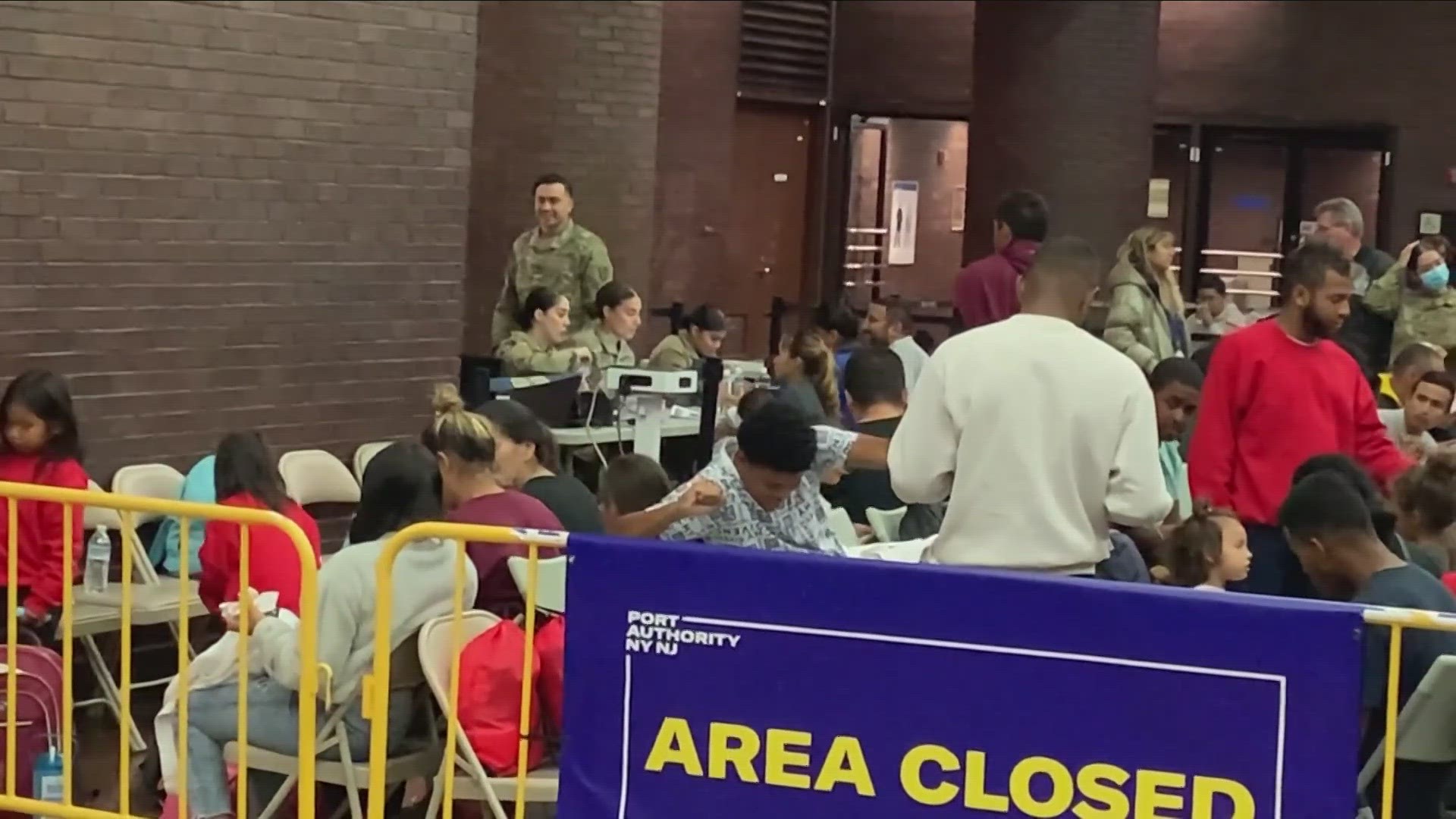BUFFALO, N.Y. — Advocates for those seeking asylum made their case for acceptance Thursday as they held a rallied in Buffalo's Niagara Square.
They hope this will be a welcoming community with migrants eventually set to arrive, but there are many unresolved issues, including whether total resources will be available to cover costs for anyone coming from New York City.
Either way it is a difficult, divisive issue just like the national situation.
With the chant of "no hate, no fear; immigrants are welcome here," there was the rally amidst Buffalo's noon lunchtime crowd in the square.
But there is also the responsibility as tax dollars will be used to help support any individuals deemed asylum seekers who could be brought in from the over 60,000 sheltered in overburdened New York City.
Erie County Executive Mark Poloncarz told reporters on Wednesday, "I've been told that the costs would be absorbed by New York City and New York State. The one thing that's been assured me is this would be paid for by New York State, and beyond New York state, New York City would pay for the costs associated with lodging, food, and other supportive services. They actually have a huge program that they've established in New York City alone that they would expand up here."
Meghan Maloney de Zaldivar of the New York Immigration Coalition pointed out that immigrant service agencies in the Buffalo area are still waiting for exact details.
"Once that funding is allocated and there are contracts that have been signed, there could be more information. That is not the case right now. None of the organizations locally have received that funding, and there is no confirmation of that, so we can't comment on what the government may or may not be allocating at this moment."
Just how far that funding goes is still up in the air as well. Gov. Kathy Hochul allocated $1 billion for immigrant assistance in the state's newly passed budget.
But New York City Mayor Eric Adams has already said costs for sheltering and services in his city will go over $4 billion.
Part of the problem is that asylum cases can go on for years in immigration court, with its major backlog, as they make the case that they fear persecution or violence in their home countries.
Officials at the Vive Shelter for immigrants here in Buffalo do speculate on this point. Ann Mongo, who is chief program officer for Jericho Road, which runs Vive says: "People have been in New York City for a while. I think there's a good chance that many of them are further along in the process than the starting point."
That is key as Governor Hochul mentioned prospective jobs at farms, restaurants, and custodial services. She and others want the federal government to ease its work permit rules for those seeking asylum which might require up to a six-month waiting period.
Hochul said, "They are ready to work, they're willing to work, they're not able to work."
Mongo told us Thursday: "I think the idea of a four to six month window stems from the fact that we're very hopeful that people would be far enough in the process that at the end of that window they will be able to be employed, working, self-supporting and paying all the same taxes that the rest of us are paying, and actually contributing into our tax base."
However, so far the Biden Administration's immigration officials are not buying into that request with the concern that waiving the waiting period may lead to a wave of illegal border crossings from people trying to get immediate work.
Assistant Secretary Blas Nua Ez-Neto is in charge of Border and Immigration Policy for the U.S. Department of Homeland Security.
He said: "I think we are trying to create a system of incentives and dis-incentives to you know incentivize people to use these lawful pathways and frankly disincentive them from crossing unlawfully and putting their lives in the hands of smugglers."
While there was some initial planning in anticipation that some individuals would come here, apparently much more will happen behind the scenes to actually make all this work. That hopefully will occur without the funding and staffing crisis we have seen at the border and in New York City.
Statistics from various agencies also indicate that only about 40 percent of those individuals filing for asylum are granted that status by a judge in U.S. Immigration Court.
Some of that is due to the fact that they may have no legal representation. Taxpayers are paying for that as well as the state of New York did allocate $10 Million dollars for attorneys as part of that $1 billion in the state budget.

